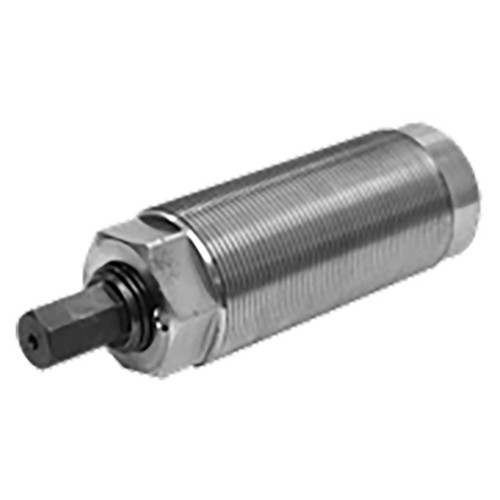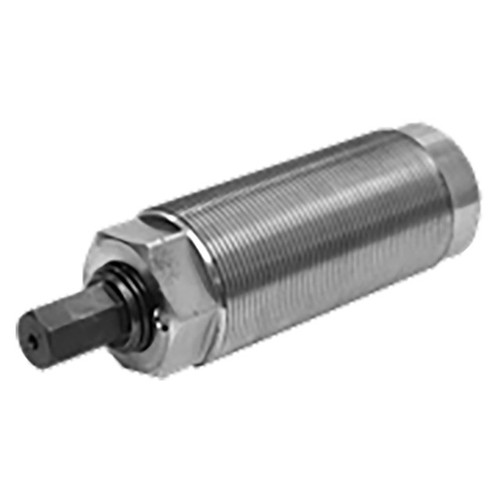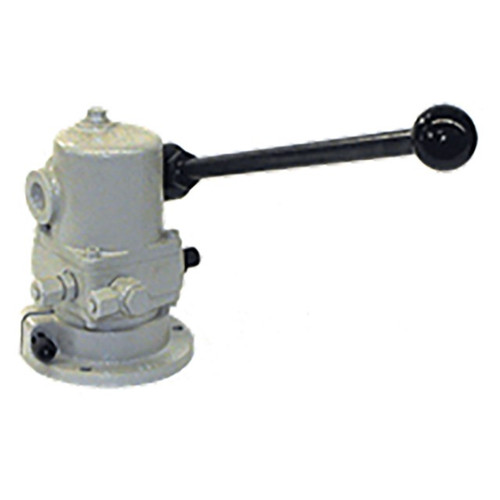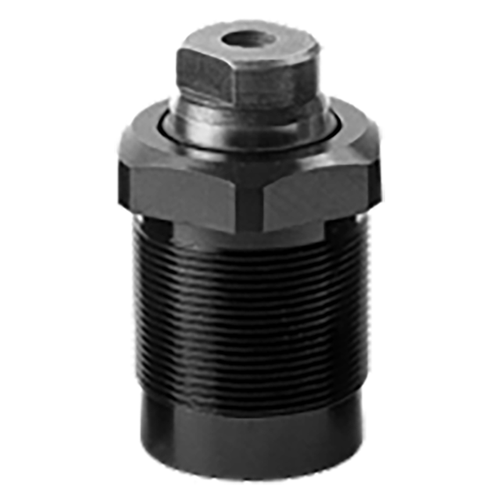Threaded Body
7250 psi max For Single-Acting SystemsScrew Clamps are an ideal hydraulic pressure sThece for small clamping fixtures that must be independent of an external power sThece. Small enough to mount directly on the fixture. Can be operated manually with a crank handle or using a power torque wrench (non-impact type). Produces 7250 psi hydraulic pressure from only 40 ft-lbs torque. Can be used in multiples if greater fluid capacity is required. The threaded-body type shown here is designed for manifold mounting.
Operation
Turn screw shaft clockwise to clamp. Tighten until desired pressure is reached (read pressure on a separate gauge, or tighten to a predetermined torque). Turn counterclockwise to unclamp.
Design Considerations
In closed systems such as this, all clamps and components must be leak-free, so use only Roemheld products. For best results, clamps should use only 60-70% of the Screw Pump's total fluid capacity. System plumbing must be designed to avoid air pockets. If Screw Pump is not at the highest point in the system, include a separate fill plug at the highest point. Always include a pressure gauge on the fixture when using a Screw Pump. When using an accumulator, use only the smallest size due to limited fluid capacity. For additional safety on palletized fixtures, use a Control Cylinder, with position sensing on the machine tool.
Mounting & Setup
Mount horizontally. Install directly into a flat-bottom tapped hole in the fixture-see drawings for hole-preparation instructions. Tighten to the recommended installation torque. Fill system with clean, approved Hydraulic Fluid with the pump piston fully returned. System must be totally purged of air.
Parts Specification
| Operating Pressure Range (PSI) | Total Fluid Capacity (cu In) | Fluid Displaced Per Revolution (cu In) | A Body Thread | B Hex (mm) | Installation Torque (ft-lbs) | Weight (lbs) |
| O-7250 PSI | 1.28 cu.in | 0.06 cu.in | M38x1.5 | 13mm | 58 ft-lbs. | 4 lbs. |
Warning:
This product can expose you to materials and/or chemicals including arsenic, lead, and other materials and/or chemicals which are known to the state of California to cause cancer and/or reproductive harm.
For more information, visit www.P65Warnings.ca.gov

 714.897.1700
714.897.1700
 Chat
Chat
 Email
Email
 Quotes
Quotes
 Quick Order
Quick Order










